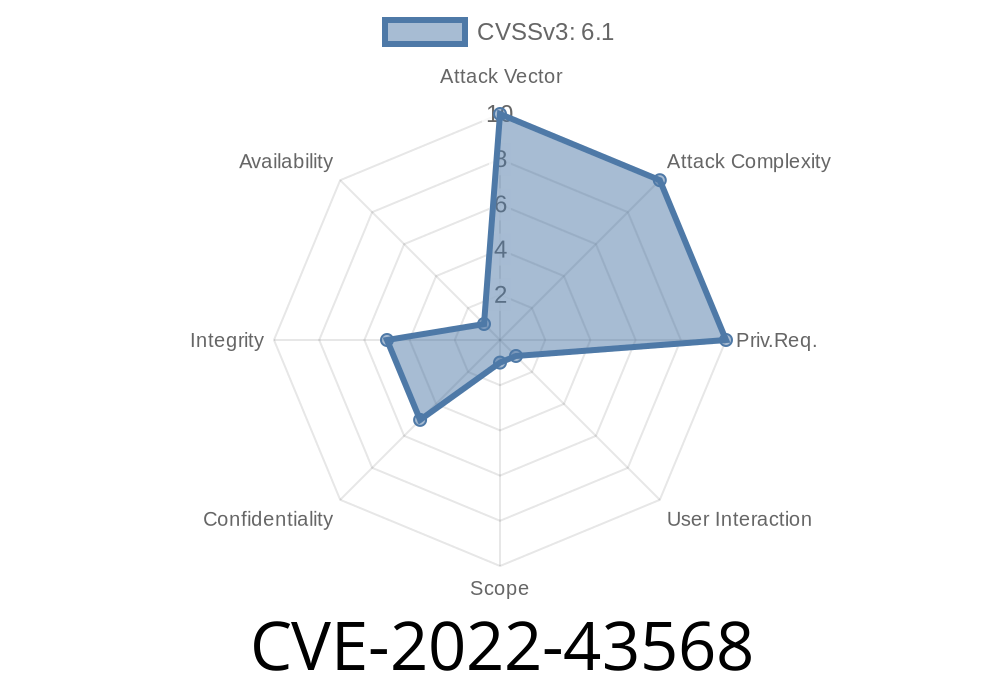CVE-2022-43568 is a recently released vulnerability in Splunk Enterprise versions below 8.1.12, 8.2.9, and 9..2. This potentially dangerous vulnerability allows an attacker to perform a Reflected Cross Site Scripting (XSS) attack via JavaScript Object Notation (JSON) in a query parameter when output_mode=radio. In this blog post, we will walk you through the details of the vulnerability and provide you with the necessary steps to protect your system from succumbing to such an exploit.
Understanding CVE-2022-43568: What is happening?
The vulnerability exists in Splunk Enterprise, which is a powerful data-collection and analysis platform. An attacker could exploit this vulnerability by sending a malicious URL containing a crafted JSON object to a victim, tricking them into clicking it. Upon clicking the link, the victim's browser would execute the malicious code contained in the JSON object, thus allowing the attacker to steal sensitive data, impersonate the user, or perform other unauthorized actions.
Here is a code snippet that demonstrates how an attacker might exploit this vulnerability
const malicious_payload = <script>alert('XSS!')</script>;
const json_payload = {
_key: malicious_payload
};
const url = https://splunk.example.com/splunk/search?q=${encodeURIComponent(JSON.stringify(json_payload))}&output_mode=radio;
The above code forms a malicious URL containing a JSON object with a simple XSS payload that would trigger an alert with the message "XSS!". If a user were to open the URL, the injected script would run in their browser, allowing an attacker to perform additional malicious actions.
For further information about CVE-2022-43568, feel free to consult the following references
1. NVD - CVE-2022-43568: This is the official National Vulnerability Database entry containing detailed information about the vulnerability.
2. Splunk Security Advisory (ADVISORY-547): Splunk has issued a security advisory detailing the vulnerability, its affected versions, and the steps users can take to remediate the problem.
Exploit Details & Mitigation
As of now, there is no known working exploit in the wild that takes advantage of CVE-2022-43568. Nevertheless, it is crucial to keep your systems up-to-date with the latest security patches to minimize the risks posed by this vulnerability.
According to the Splunk Security Advisory, the company has remediated this vulnerability in the following Splunk Enterprise versions:
9..2
As a Splunk Enterprise user, you should immediately update your system to one of these versions or later.
To update your Splunk Enterprise
1. Download the latest version from the Splunk Downloads page.
2. Follow the Splunk Upgrade Guide to complete the upgrade process.
3. Verify that your system is running a patched version by checking the build number in the "About Splunk" page of your Splunk Web interface.
Finally, always follow best-practices for user awareness and training, which includes educating users to recognize and avoid potentially harmful URLs.
Remember, prevention is better than cure. Stay up-to-date and secure!
Timeline
Published on: 11/04/2022 23:15:00 UTC
Last modified on: 11/07/2022 20:55:00 UTC
